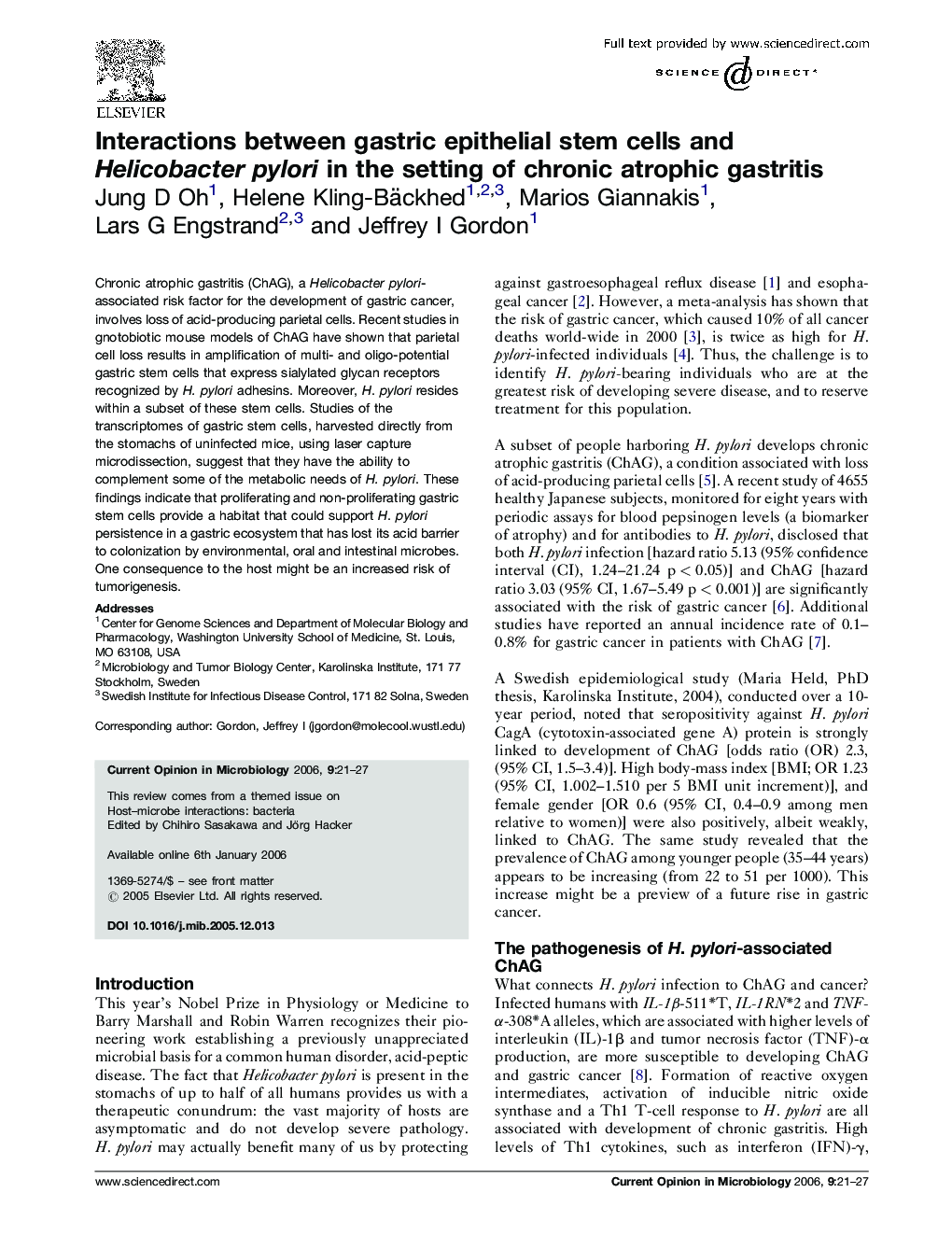| Article ID | Journal | Published Year | Pages | File Type |
|---|---|---|---|---|
| 3399776 | Current Opinion in Microbiology | 2006 | 7 Pages |
Chronic atrophic gastritis (ChAG), a Helicobacter pylori-associated risk factor for the development of gastric cancer, involves loss of acid-producing parietal cells. Recent studies in gnotobiotic mouse models of ChAG have shown that parietal cell loss results in amplification of multi- and oligo-potential gastric stem cells that express sialylated glycan receptors recognized by H. pylori adhesins. Moreover, H. pylori resides within a subset of these stem cells. Studies of the transcriptomes of gastric stem cells, harvested directly from the stomachs of uninfected mice, using laser capture microdissection, suggest that they have the ability to complement some of the metabolic needs of H. pylori. These findings indicate that proliferating and non-proliferating gastric stem cells provide a habitat that could support H. pylori persistence in a gastric ecosystem that has lost its acid barrier to colonization by environmental, oral and intestinal microbes. One consequence to the host might be an increased risk of tumorigenesis.
